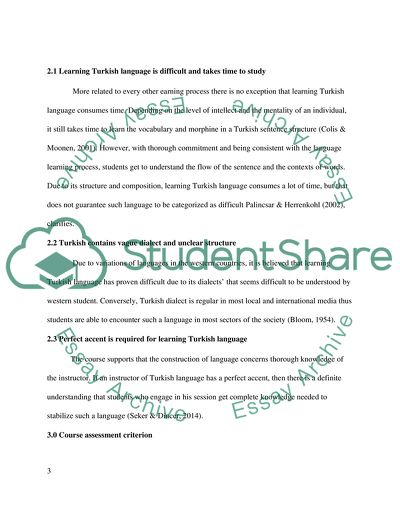Cite this document
(Designing a Turkish Language Course Design Case Study Example | Topics and Well Written Essays - 4000 words, n.d.)
Designing a Turkish Language Course Design Case Study Example | Topics and Well Written Essays - 4000 words. https://studentshare.org/education/1829647-rationale-for-the-design-approaches-taken-and-for-the-assessment-procedure-selected
Designing a Turkish Language Course Design Case Study Example | Topics and Well Written Essays - 4000 words. https://studentshare.org/education/1829647-rationale-for-the-design-approaches-taken-and-for-the-assessment-procedure-selected
(Designing a Turkish Language Course Design Case Study Example | Topics and Well Written Essays - 4000 Words)
Designing a Turkish Language Course Design Case Study Example | Topics and Well Written Essays - 4000 Words. https://studentshare.org/education/1829647-rationale-for-the-design-approaches-taken-and-for-the-assessment-procedure-selected.
Designing a Turkish Language Course Design Case Study Example | Topics and Well Written Essays - 4000 Words. https://studentshare.org/education/1829647-rationale-for-the-design-approaches-taken-and-for-the-assessment-procedure-selected.
“Designing a Turkish Language Course Design Case Study Example | Topics and Well Written Essays - 4000 Words”. https://studentshare.org/education/1829647-rationale-for-the-design-approaches-taken-and-for-the-assessment-procedure-selected.


